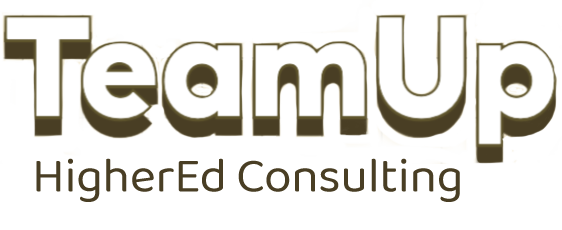Projects
Master’s Program Differentiation
The team needed to differentiate a master’s program in a crowded marketplace by identifying its unique value propositions. This required exercises to articulate its strengths, align them with audience needs, and develop proof points to turn these into compelling marketing assets.
-
Clearly differentiate the program from competitors.
Identify and articulate key proof points to build credibility.
Create marketing assets that resonate with the target audience and drive engagement.
-
Discovery Phase: Conducted internal workshops to uncover the program’s strengths and competitive edge.
Market Research: Analyzed competitor offerings and audience expectations to identify gaps and opportunities.
Positioning Exercises: Facilitated exercises to define core messaging pillars and the program’s unique selling points (USPs).
Proof Point Sourcing: Worked with stakeholders to source examples, success stories, and data that support key claims.
Asset Development: Turned proof points into audience-focused content such as ads, brochures, and website copy.
-
Proof Point Identification Framework: A guide to systematically uncovering evidence of program excellence.
Program Differentiation Worksheet: Exercises to define USPs and audience benefits.
Competitor Comparison Template: A structured format to analyze and compare key program features.
Messaging Framework: A document to align team members on key messaging pillars and tone.
Compelling Content Examples: Sample ad copy, web content, and social media posts based on proof points.
Workshop Materials:
Exercises to brainstorm unique attributes and competitive advantages.
Group activities to draft audience-centered messaging.
Storytelling Guide: Tips on turning data, success stories, and testimonials into engaging narratives.
Content Development Workflow: A step-by-step process to refine raw proof points into polished marketing materials.
This structured approach enabled the team to craft a strong program narrative supported by tangible proof points, making their marketing efforts more credible and engaging.
Managing SEO for a higher education website with 10 individual programs—each targeting unique audiences and keywords—was overwhelming for the team. With limited bandwidth and external support, they needed a simple, actionable process to balance efforts across programs while focusing on what mattered most.
Simplifying SEO to Boost Enrollment
-
Increase organic traffic to program pages.
Improve keyword rankings for each program.
Generate more inquiries and applications from organic search.
Keep the website running smoothly with basic technical updates.
The team also needed a dashboard to make progress easy for leadership to understand at a glance.
-
To make the process manageable, I created a simplified roadmap, focusing on high-impact actions and prioritizing the most critical tasks.
Phase 1: Setting Goals and Establishing a Process
Defined Key Objectives:
Focus on growing traffic, improving rankings, and driving inquiries for each program.
Ensure goals were measurable and easy to track.
Set Up Simple Tracking:
Used tools like Google Analytics and Google Search Console to monitor organic traffic, keyword rankings, and inquiries.
Built an easy-to-read dashboard for leadership that showed traffic trends and top-performing programs.
Prioritized Programs:
Identified which programs needed the most attention (e.g., low-performing pages or high-priority enrollment goals).
Created a list of focus programs to tackle first.
Phase 2: Simplified Assessments
Keyword Research:
Found 3-5 core keywords for each program based on relevance, search volume, and ranking potential.
Focused on long-tail keywords for quick wins (e.g., “affordable online MBA for working professionals”).
Basic Content Review:
Checked each program page for clear messaging, relevant keywords, and calls-to-action.
Flagged gaps for easy updates, like missing FAQs or outdated career outcomes.
Quick Technical Audit:
Focused on a few key technical areas:
Page speed.
Mobile usability.
Fixing broken links.
Phase 3: Focused Implementation
Quick Wins:
Optimized titles, meta descriptions, and headings with primary keywords for each program.
Added internal links between related pages to improve navigation and rankings.
Small but Impactful Updates:
Made basic improvements to program pages, such as:
Adding testimonials or alumni outcomes.
Creating simple FAQs based on common questions.
Regular Monitoring:
Used the dashboard to track progress and identify which pages needed further adjustments.
-
SEO Checklist
Keyword Research Guide
Keyword Prioritization Framework
SEO Content Brief Template
Dashboard Template
Content Optimization Guide
Tools and Software Recommendations
Internal Workshops
Keyword research basics.
Writing SEO-friendly content.
Quick Reference Guides
SEO Best Practices Cheat Sheet: A one-pager on dos and don’ts (e.g., avoid keyword stuffing, optimize for mobile).
Common SEO Issues and Fixes
Let’s Connect—Pressure Free!
Not sure where to start or just need a fresh perspective? There’s no harm in setting up a quick call to see how I can help empower your team and achieve your goals. Fill out the form and let’s start the conversation!
